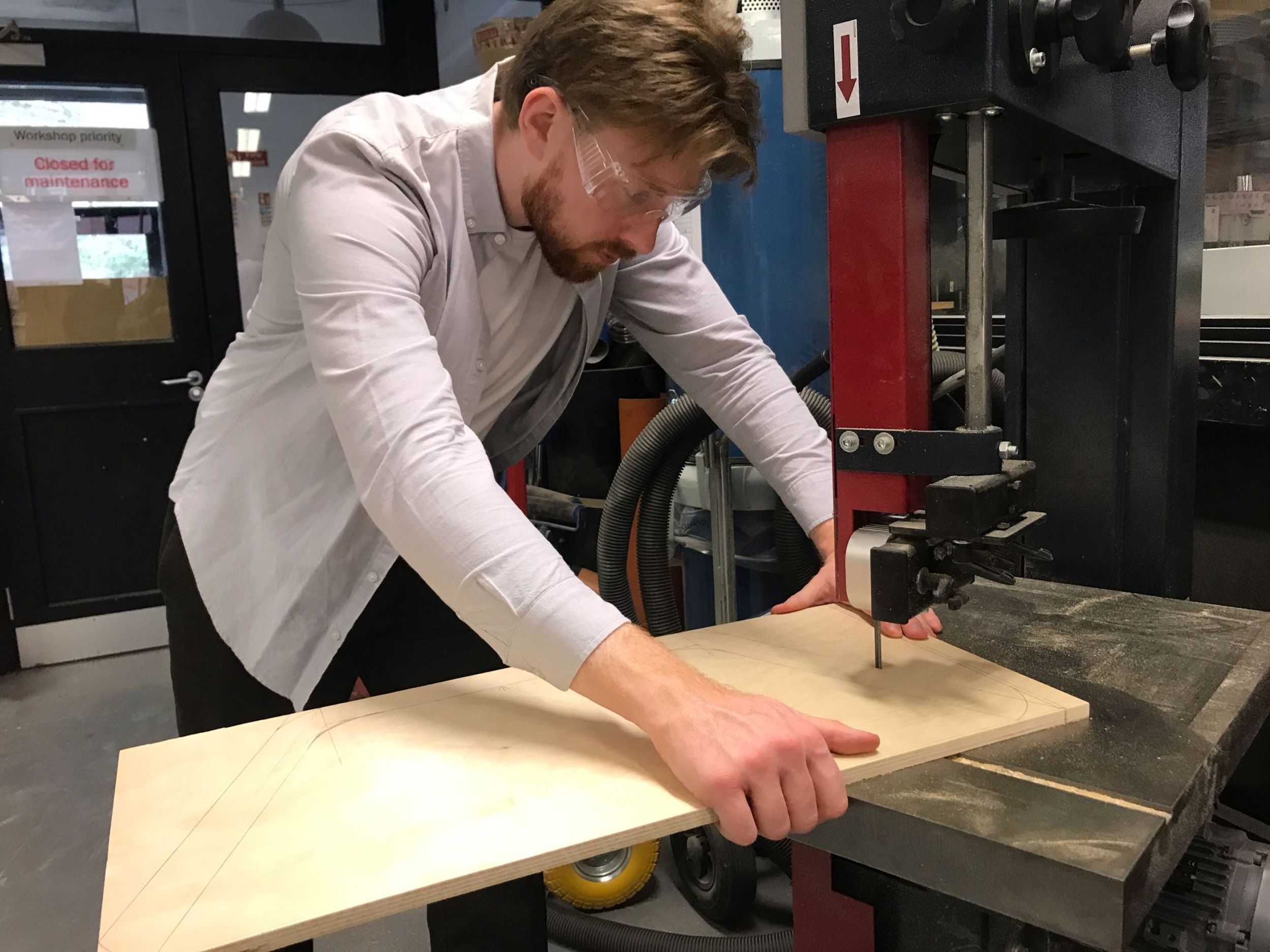
Seanchaí
The Storyteller of the city
Seanchaí
Project Timeline 29/01/24 - 16/02/24
The Brief
This project stemmed from a design brief centered on rituals and technology. The challenge was to create a technology-based intervention that enhances or adds meaning to an existing or new ritual. It emphasized a human-centered approach, focusing on how technology could complement the physical and social aspects of rituals, rather than solely relying on digital interaction. We were encouraged to explore the power of rituals as punctuation marks in our lives, providing structure, connection, and meaning. This project explores the enduring ritual of storytelling in Ireland, a country with a rich tapestry of myths, legends, and jokes passed down through generations.
Team
Eoghan Carr - MA IxD
Eva Cooke - MA IxD
Shane McInerney - MA IxD
Discover
Rituals
Learning Physical Computing
Sketch Ideation
Storyboarding
Our Process
Define
Problem Statement
Sketch Models
Rapid Prototyping
Develop
Design Sketching
Prototype Iteration
Low-Fi Testing
Visual Design
Delivery
Product Photography
High Fidelity Prototype
User Testing
Learnings
Rituals
The project aimed to explore the intersection of tradition and technology, focusing on the concept of ritual and its contemporary relevance. Through a rapid brainstorming session, we identified several potential rituals that could be reimagined through creative technology. Ultimately, we selected three key rituals: the passing down of stories, the sharing of secrets, and the bedtime story. These rituals are deeply ingrained in Irish culture and often involve a strong oral tradition. By examining these rituals, we sought to understand how technology could enhance or challenge these traditional practices. On the right you can see our visual research board from the design studio.
Concept 1
Telling Secrets
Concept 2
Bedtime Stories
Concept 3
Passing Down Stories
Seanchaí
Our modern take on the Irish tradition of story-telling
As a team, we realised during our initial exploration phase that we were all fascinated by the act of sharing stories; and the spoken word. While every culture has its stories and rituals to share, "the gift of the gab" is a uniquely Irish tradition, and we wanted to celebrate this. We began the project's next stages, asking ourselves: "How can we bring this ancient tradition back into our modern world?" After sketching and storyboarding many ideas, we moved straight into iterating and testing an object that could record and tell stories and was to be installed in urban settings for the public to use.
Sketch Modelling & Testing
To further develop the concept of storytelling, we embarked on a rapid prototyping phase. By creating numerous sketch models, we were able to quickly explore various design directions and iterate on ideas. This hands-on approach allowed us to visualize the potential interactions between users and the technology. To gather valuable insights, we conducted user testing sessions in the vibrant Thomas Street area. Employing a "show, not tell" methodology and a "Wizard of Oz" approach, we presented our prototypes to participants and observed their reactions and feedback. This iterative process enabled us to refine our design and ensure that the final product would resonate with the target audience.









Insights
We needed to increase the privacy when using the device with a covering.
We needed to signify the affordance of the recording button more.
A random story should play first, to hint to the user what the device is for.
Iterative Development and Refinement
Leveraging the insights gained from user testing, we embarked on a rigorous development phase. This involved further exploration of creative technologies, such as Arduino, to refine the functionality and aesthetics of our prototype. By iteratively refining our design, we transitioned from low-fidelity sketches to a high-fidelity physical artifact. Employing laser-cutting techniques, we crafted a sleek and visually appealing box-shaped device that seamlessly integrated with the storytelling experience.
Design Affordances
To effectively facilitate the rituals of listening and storytelling, we explored various interaction paradigms. Initially, we experimented with buttons, instructions, voice commands, and physical gestures. However, through rigorous user testing, we discovered that a more intuitive and engaging approach was to align the interaction with natural human behavior. The final design emerged as a harmonious blend of physical and digital elements: leaning into the device to listen to a story and pressing a button to share one's own narrative. To ensure transparency and user consent, we incorporated a visual indicator—a red LED light—that illuminated when the recording button was pressed, signaling that the device was actively capturing audio. This design choice not only simplified the user experience but also enhanced the overall ritualistic quality of the interaction.
Future Directions
The potential applications of this project extend beyond its initial concept. I envision this technology finding its place in various public settings, such as art exhibitions, community engagement programs, and college campuses, particularly during events and gatherings. By integrating this device into these spaces, we can foster a sense of community and shared experience, allowing individuals to contribute their stories and connect with others.
Moreover, this technology has the potential to serve as a powerful tool for social activism and advocacy. By deploying these devices at rallies and protests, we can amplify the voices of marginalized groups and create a digital archive of their experiences. This archive can be used to raise awareness, inform policy decisions, and inspire social change.
Finally, this technology can be utilized to provide a safe and anonymous space for individuals to share their stories, particularly those who may be hesitant to speak out publicly. By removing the barriers to expression, we can empower individuals to share their experiences, seek support, and find solace in the knowledge that they are not alone.










